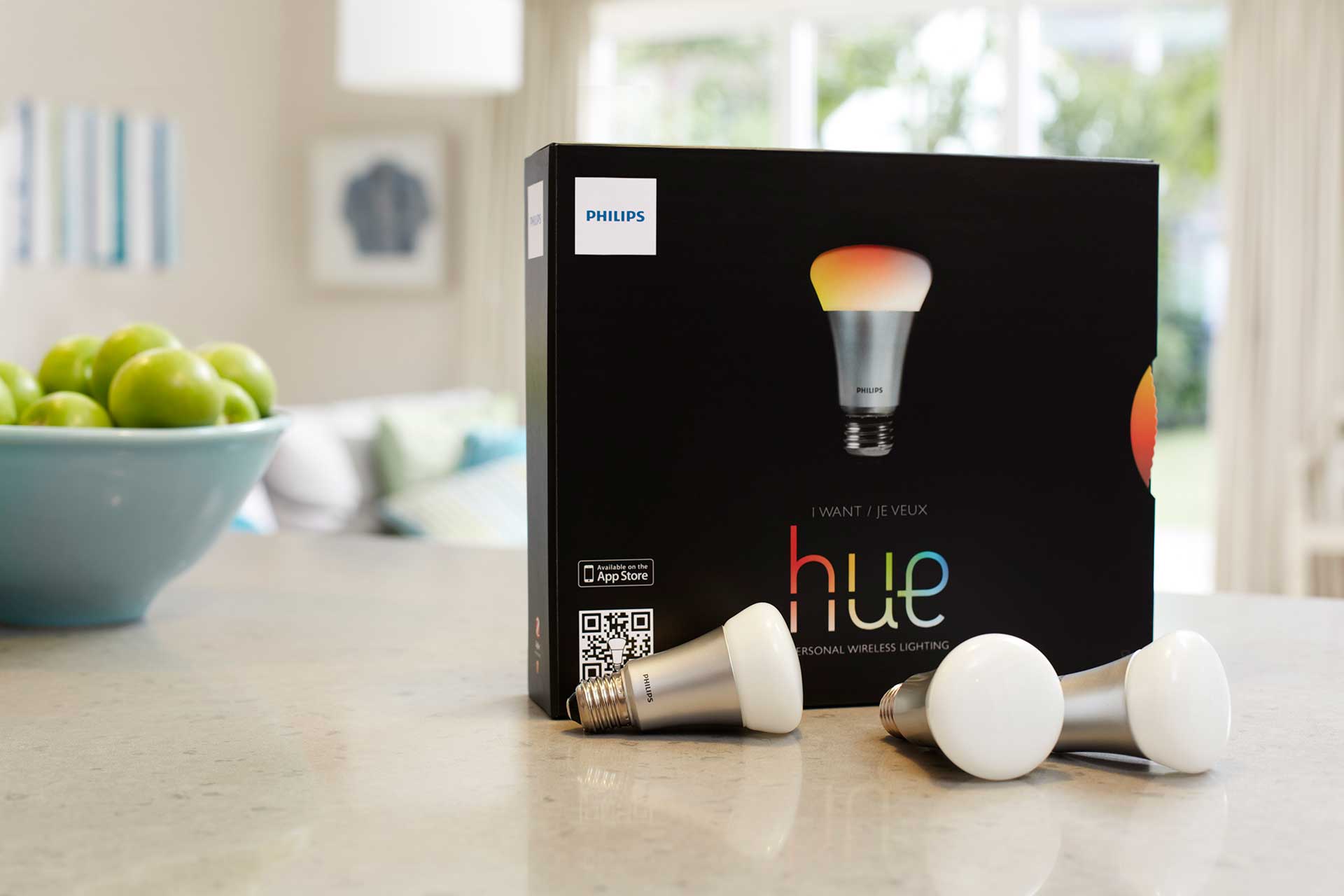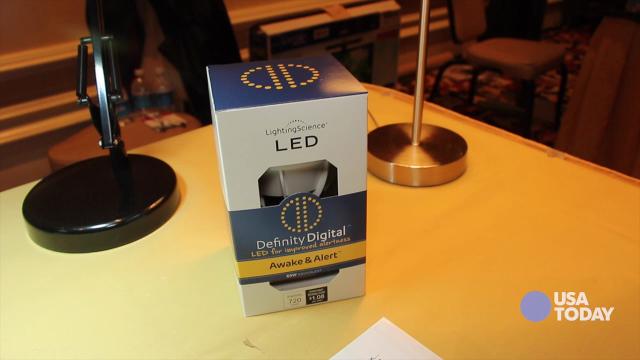While you can have professionals come and set up wireless lighting systems throughout your home for $1,500 to $5,000, there are some relatively low cost mini-systems out there that you can install yourself. An added benefit of these systems is that they all use LED bulbs which give you great energy efficiency and all kinds of color and dimming options.
DIY Lighting Systems
The Hue is a $199 do-it-yourself starter kit from electronic manufacturer Philips. It includes a wireless hub that plugs into your home router, and three LED bulbs that respond to wireless signals.
 |
| Source: Phillips |
Once the hub and bulbs are installed, you control everything from your smartphone, setting up zones (called “scenes” by Hue), and choosing color combos from millions of possible hues. You can even add tricks, such as having your lights flash when one of your tweets is re-tweeted.
If you get hooked on your Hue, you can expand — additional bulbs are $60 each. And because it’s linked to your internet router, your hub can be accessed from virtually anywhere using your smart phone, tablet, or laptop. Working late? Delay your “Coming Home” mode for an hour — and save energy.
Another smart bulb on the market is the ilumi bulb. With two strengths (100-watt and 60-watt) ranging between $84 and $94, the ilumi bulbs us your phone's Bluetooth network. So you'll need to keep your phone within 100 feet of your bulbs in order for it to work.
 |
| Source: ilumi |
The LIFX bulb ($69) are controlled by your Wi-Fi network and can be accessed from anywhere. Wonder about the popularity of smart bulbs? LIFX started as a crowd-sourced Kickstarter project seeking $100,000 in funding; they received more than $1.3 million. That says something.
 |
| Source: Forbes.com |
Mood lighting isn't the only thing that these bulbs can help with. Seasonal Affective Disorder (SAD) affects around 20% of the US population and you can bet most of those are in the northern states like our good old Minnesota. SAD is a type of depression characterized by low energy and poor concentration and is brought about by low levels of daylight. The therapy for this disorder is use of artificial lights that mimic the properties of natural light.
Healthy Lights
The Definity Digital Awake & Alert bulb from Lighting Science ($69.99) is touted as a “blue-enriched” LED biologically-corrected lighting solution that’s “proven to boost energy, promote alertness, and enhance performance.”
 |
| Source: USAToday |
The Withings Aura sleep monitoring device measures heartbeat and breathing patterns to adjust light levels in your bedroom, providing deeper sleep during the night and gentle alarms and raised light levels to bring you gently awake in the morning. Multi-colored LED dimming and brightening technologies help regulate the body’s melatonin — the hormone responsible for the body’s sleep/wake cycle. The system is about $300.
 |
| Withings Aura Sleep Monitoring System Source: inventorspot.com |
Kohler’s Underscore Bathtub with Chromatherapy bathes you in underwater light as you soak. Choose from a variety of light colors to suit your mood. The tub is about $3,600.
 |
| Source: 27east.com |
The Future Of Lighting
There's no question that LEDs are the lights of the future. The price on LED lighting has come down significantly in recent years and will continue to drop. LED lighting emits no heat and can be made really small - think the point of a pencil.
That means the future will see a difference in the way we light out homes. For example, hundreds of tiny LEDs can be embedded in sheets of drywall to create walls and ceilings that glow. There are already luminous LED wallpapers on the market.
 |
| Source: inhabitat.com |

No comments:
Post a Comment